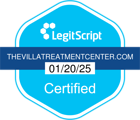Drug addiction develops through a combination of your genetic predisposition (affecting neurotransmitter function) and environmental triggers like trauma, social pressure, or normalized substance use. Your brain’s reward circuits become fundamentally altered, often alongside mental health challenges – with 8.4% of U.S. adults experiencing both conditions. This devastating cycle creates massive personal and societal costs, exceeding $511 billion annually. Understanding these complex interactions reveals promising pathways for prevention and recovery.
The Biology Behind Addiction: Genes, Brain, and Vulnerability

While genetics alone don’t determine addiction susceptibility, research has revealed a complex interplay between inherited factors and substance use disorders. Scientists have identified 19 shared genetic markers across different addictions, with substance-specific variations including 47 SNPs linked to alcohol, tobacco, cannabis, and opioid dependencies. Studies show that childhood stress can trigger epigenetic changes that amplify addiction risk.
Your genetic makeup influences addiction vulnerability through multiple pathways, particularly in dopamine signaling regulation and neurotransmitter system function. These inherited traits can affect developmental trajectories and trigger epigenetic modifications when exposed to substances. The presence of specific genes like ADH1B and ALDH2 can significantly impact how individuals respond to different drugs.
The prefrontal cortex, vital for decision-making, shows genetically influenced alterations in function. Your risk increases through polygenic interactions, where multiple genes combine to boost susceptibility. Research indicates that brain plasticity mechanisms, shaped by genetic predispositions, can expedite the shift from use to dependence.
Environmental Triggers and Social Pressures

Beyond genetic predisposition, environmental factors substantially shape addiction risk through multiple interacting pathways. You’ll face exposure to substances through both immediate social circles and broader cultural influences.
Parental role models who misuse substances create normalized patterns of drug use, while peer socialization during adolescence can increase vulnerability due to mental health challenges. Your home environment plays a pivotal role – chaotic households, abuse, or neglect increase vulnerability to substance dependence. Those experiencing chronic social isolation often turn to substances as a means of coping.
Furthermore, you’re impacted by easy substance access in your community and media portrayals that glorify drug use. Traumatic experiences and chronic stress from socioeconomic hardship further heighten your risk. Understanding these environmental triggers helps identify key intervention points, as you’re shaped by the complex interplay of home life, peer groups, and societal pressures.
Mental Health and Substance Use: The Dual Crisis

How do mental health disorders and substance use disorders intertwine to create a devastating public health crisis? The statistics paint a stark reality: 8.4% of U.S. adults battle both conditions simultaneously, with 7.4 million experiencing severe mental illness alongside substance use disorders. You’ll find treatment access limitations severely impact recovery outcomes only 17% of affected adults receive integrated care for both conditions.
The consequences are far-reaching: you’re facing increased suicide risk, chronic disease complications, and higher rates of HIV transmission when these disorders co-occur. Systemic stigma and discrimination further compound these challenges, creating barriers to extensive care. According to recent data, non-Hispanic Native American youth experience disproportionately high rates of both suicide and drug overdose deaths.
The crisis particularly affects vulnerable populations, with childhood trauma survivors and homeless individuals experiencing disproportionate impacts. Most concerningly, over 40% of adolescents report persistent sadness, correlating with rising substance use rates.
The Hidden Cost: Economic and Healthcare Burden
When examining the economic impact of substance use disorders, you’ll find staggering costs that ripple through healthcare systems and national economies. The financial burden extends far beyond direct healthcare expenses, affecting productivity and straining international drug trade cooperation. Substance abuse disorders cost $511 billion per year, exceeding cardiovascular disease. In the Eastern Mediterranean Region, treatment access remains critically low, with only 1 in 13 affected individuals receiving necessary care.
Drug-related costs consume 9.7% of US GDP ($2.7 trillion annually), while global impacts reach 2% of GDP in affected nations. Treatment gaps and rehabilitation program efficacy remain concerning, with only 6.3% receiving proper care. Productivity losses total $442 billion annually ($249B alcohol, $193B illicit drugs). Criminal justice expenses reach $277 billion yearly, demanding increased resource allocation.
Without effective intervention strategies, these costs continue to climb. Healthcare systems struggle with high relapse rates 78% for opioids and 68% for alcohol highlighting the need for improved treatment approaches and international cooperation.
Prevention, Treatment, and Current Trends
The effective management of addiction demands detailed, thorough, and all-inclusive prevention strategies and evidence-based treatment protocols that reduce both individual and societal costs. You’ll find prevention approaches operating at multiple levels, from family-based programs improving parenting skills to school-based initiatives teaching drug refusal strategies. Evidence-based treatment outcomes rely heavily on expanding access to timely care and strengthening community-based recovery supports. Recent statistics show that over 46 million Americans faced substance use disorders in 2022, highlighting the urgent need for comprehensive intervention strategies.
Current trends emphasize technology integration in prevention and treatment delivery, while national initiatives focus on organizing awareness events and social media campaigns. Policy makers are implementing extensive programs that combine school and community interventions with digital outreach strategies. These coordinated efforts aim to build resilience, promote healthy behaviors, and establish sustainable recovery support systems across diverse populations.
Frequently Asked Questions
Can Addiction Skip a Generation in Families?
Yes, you’ll find that generational addiction patterns can skip generations due to complex interactions between genes and environment. While family addiction histories show strong genetic links (40-60% heritability), addiction isn’t guaranteed to appear in every generation.
Your genes may carry addiction risk, but they require specific environmental triggers to activate. Protective factors like positive parenting, strong support systems, and healthy coping mechanisms can prevent addiction from manifesting in intervening generations.
How Long Does It Take for the Brain to Heal After Addiction?
Your brain’s restoration duration follows a distinct neurological recovery timeline. You’ll experience initial changes within 2 weeks during detox, followed by significant improvements in months 1-3 as your mood stabilizes and cognitive function improves.
Full recovery can take 6-14 months, with dopamine systems requiring the longest healing time. You’ll notice faster progress with consistent abstinence, though individual factors like usage history and genetics influence your specific timeline.
Why Do Some People Become Addicted Instantly While Others Don’t?
Your susceptibility to instant addiction depends heavily on your genetic predisposition – certain inherited variants can make you up to 50% more vulnerable. When combined with environmental factors like trauma or early drug exposure, these genetic markers can trigger immediate dependency in some people.
Your brain’s baseline dopamine levels and preexisting mental health conditions also play integral roles. Meanwhile, others with different genetic profiles may experience slower or no addiction development.
What Role Does Childhood Nutrition Play in Addiction Susceptibility?
Your childhood nutrition greatly influences your susceptibility to addiction through multiple pathways. When you experience poor nutrition early in life, often tied to lower parental nutrition levels and socioeconomic status impacts, it can alter your brain’s reward systems.
Research shows you’re more vulnerable to substance dependence if you’ve had limited access to essential nutrients during development. Furthermore, early exposure to ultra-processed foods can predispose you to addictive behaviors by disrupting normal neurotransmitter function.
Does Living in Different Climates Affect Addiction Recovery Rates?
Yes, climate variation markedly impacts your recovery outcomes. You’ll face greater challenges in extreme weather conditions, which can disrupt treatment access and trigger stress responses.
Geographic isolation in certain climates can limit your access to support networks and medical services. Research shows you’re more vulnerable to relapse during natural disasters, and extreme temperatures can worsen withdrawal symptoms.
Heat waves particularly affect your body’s ability to maintain stability during recovery.






